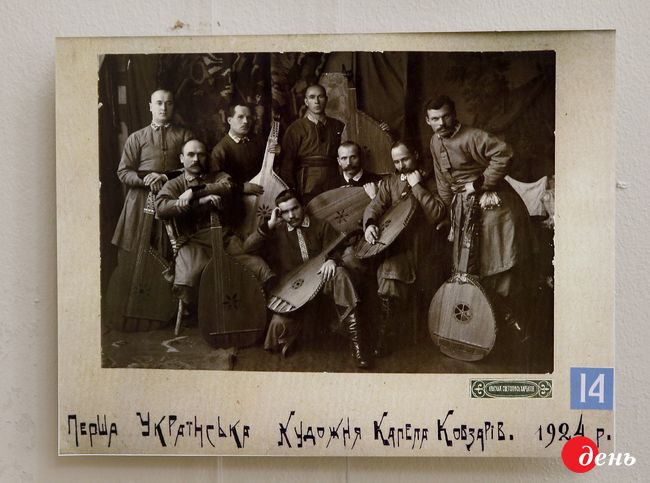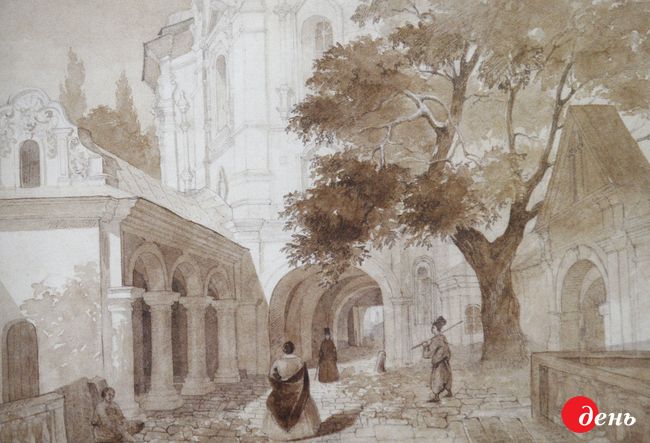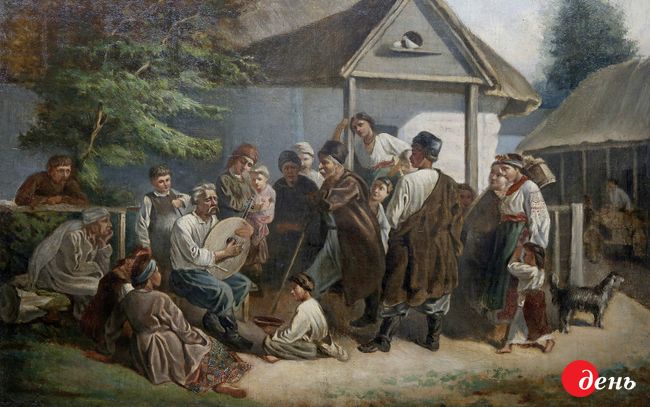How to debunk myths?
Taras Shevchenko National Museum offers a revolutionary new approach to history of the Ukrainian kobzar culture
The exhibition “(R)evolution of a Myth: the Transformation of the Kobzar Culture in the 19th-21st Centuries” offers an unprecedented new look at the events it covers, and at the same time, debunks the myths... Who were they – kobzars, lirnyks, and bandurysts? How did they differ from beggars? And were they really a closed brotherhood with a strict code of behavior, initiation rites, and even a secret language? How did folk singers become the object of interest in the 19th century? What role did Taras Shevchenko play in this? Why is he called the Great Kobzar and how did he become the center of the myth about folk singers? Why did the Soviet authorities consider the kobzars a threat and try to eliminate them as a phenomenon, preserving the form, but destroying the substance? Scholars of the Taras Shevchenko National Museum attempted to investigate these and other issues. This project lasted for about two years. It is being presented at the exhibition “(R)evolution of a Myth: the Transformation of the Kobzar Culture in the 19th-21st Centuries,” which was launched recently in the museum building at Shevchenka Boulevard.
“A contemporary, modern perception of the kobzar culture is taking shape in Ukraine right now,” asserted the joint curator of the exhibition (along with Anastasia Aboliesheva) Viktoria Antonenko, “and because the process is still incomplete, we can see manifestations of the familiar Soviet-era faux Ukrainian folk art in the mass culture. At the same time, modern artists mix the ‘high’ kobzar tradition with music done in modern styles. Meanwhile, such people as, for example, Kost Cheremskyi, a researcher and practicing musician from the Kharkiv Kobzar Guild, or Volodymyr Kushpeta, try to revive that tradition as is – in a ‘pure’ form... The way the kobzar culture will look like in the 21st century depends on us, ordinary Ukrainians: on what kind of attitude to it we will choose. It is precisely to help us determine where we stand that the Taras Shevchenko National Museum created the exhibition ‘(R)evolution of a Myth: the Transformation of the Kobzar Culture in the 19th-21st Centuries.” By the way, the exhibition’s farthest and smallest room contains a specially created video installation. Out of the 40 videos, everyone can choose the ones that suit them exactly. And in this way, determine one’s own attitude to the kobzar culture...”

Most of the display is located in four museum rooms. The most surprising viewer’s impression is that, contrary to expectations, the “(R)evolution of a Myth” is a conceptual, not ethnographic exhibition. Its material is mostly presented as texts, reproductions, infographics, photos, etc. The curators have foregone the chronological approach as well. According to their concept, the main components of the image of a traveling singer (kobzar, lirnyk) in Ukraine are: a mediator, a transmitter, an artist. It is these aspects, together with the history of the kobzar culture (especially in the 20th century), that the authors of the exhibition explore. They offer the viewer not ready answers, but rather an interactive quest exhibition, where the viewer acts as a co-author of sorts.
“Interactivity” is understood also in a literal sense in the museum. Most exhibits are accompanied by a symbol – a green-colored open palm. It signals that one can and even should interact with them. Having examined, touched, read, and listened to bandura, kobza and lyre, a copy of the reprint edition of the Kobzar poetry collection, etchings by Shevchenko and his contemporaries (which feature kobzars and bandurysts in the foreground or background), an interactive dictionary of the “Lebian language” (the kobzars’ secret cant) and so on, each viewer can draw their own conclusions and see history in their own way. In essence, this is a great intertext, almost a real hologram that contains the “whole” history of the kobzar culture.

“We are always short of funds,” said director of the National Museum of Taras Shevchenko Dmytro Stus, “therefore, unfortunately, a lot of things had to be presented in a sketchy way. But we tried to do everything we could as best as we could. After all, we should have long ago started speaking about the Ukrainian culture using a new, modern scholarly language. It is high time to part with the familiar ‘archaic’!”
“The (R)evolution of a Myth” is an interesting and paradoxical exhibition. Raising the question of the “kobzar myth” is not the sole unexpected development there. By themselves, the ideas which the authors of the project offer on almost every problem they touch upon are impressive, courageous, even shocking. For example, they dared to state their own views on Shevchenko’s painting legacy, and offer to look at his etchings “in a new way.” Indeed, as the curator Antonenko explains, “we look at them, but do not actually see what is depicted there, we do not notice kobzar shapes in the background, do not give a thought to why Shevchenko portrayed precisely them in these stories.” Just as risky, it seems, was a public opinion survey commissioned by the museum, which asked the following question: who is a kobzar in the opinion of contemporary Ukrainians?

TARAS SHEVCHENKO. ALL SAINTS CHURCH OF THE KYIVAN CAVE MONASTERY (1846)
The most shocking move was inclusion in the exhibition of a fake “photocopy” of a 1930s newspaper announcing a kobzar convention to be held in Kharkiv. In this way, the authors of the “(R)evolution of a Myth” decided to counteract the widespread myth (in the negative sense of the term) of a kobzar convention allegedly executed en masse on Joseph Stalin’s orders (based on that myth, the film director Oles Sanin created the film The Guide in 2014)...
“There is no documentary evidence whatsoever! The story of the ‘kobzar convention’ is based solely on oral testimony. However, in the former USSR, even the repressive apparatus was very bureaucratized, everything was documented!” emphasizes the historian, senior researcher of the Taras Shevchenko National Museum Oleh Mahrich, who is yet another co-author of the kobzar-themed exhibition. “When creating our ‘photocopy’ of a Stalin-era newspaper, we wanted to show how to create a myth in one minute with the help of Photoshop software! But the point is that it distracts attention from the real tragedy. Under the Soviet regime, bandurysts, lirnyks, and kobzars were being destroyed year after year! And we must talk about it, not about the fictional ‘convention.’”

KOSTIANTYN TRUTOVSKY. A LITTLE RUSSIAN BANDURYST (1874-76)
While working on the “(R)evolution of a Myth: the Transformation of the Kobzar Culture in the 19th-21st Centuries,” the museum’s employees have clarified the information regarding the fate of all the kobzars, bandurysts, and lirnyks of the Soviet period whose names are still known. (Except those who lived in the Kuban Region, since information about them is held in the archives of the Russian FSB, which are still closed.) In particular, they have investigated the reliability of the famous list of “72 repressed kobzars,” which has long been spreading on the Internet. It has turned out to be unreliable! (According to Mahrich, only a few names from it have been confirmed.) On the other hand, many of the kobzars whose names appear in encyclopedias and reference books without mentioning the repression, were, as it turned out, repressed and even killed by the Soviet regime. The Taras Shevchenko Museum created a new, reliable list of repressed kobzars. It includes 43 names. One can get acquainted with the sorrowful list at the exhibition as well. If you ever come to the museum, bow to their memory, honor the fallen singers!
The exhibition can be seen until March 18.






